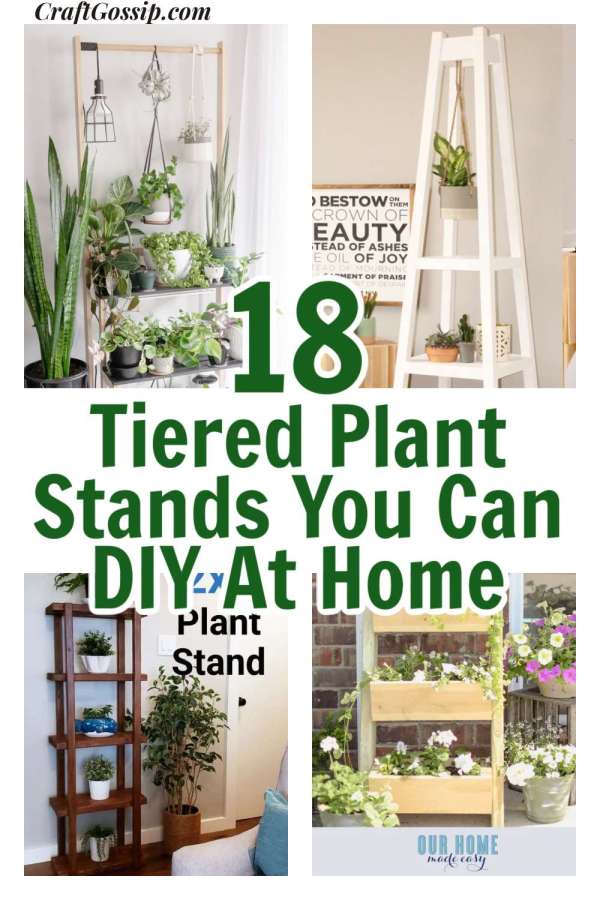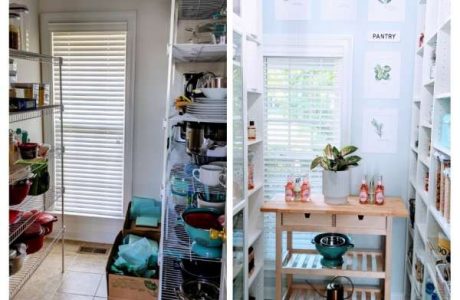
DIY spirit? In this roundup, we’re going to explore 18 fantastic tiered plant stands that you can easily craft right in the comfort of your own home. Whether you’re a seasoned plant parent or, like me, struggle to keep your green friends thriving, these versatile plant stands offer a solution to both showcase and care for your plants.
Now I won’t give out too much plant advice as I do not have a green thumb, in fact I could kill a plastic plant if I tried hard enough; technically, I have (the birds ripped the plastic leaves from my faux olive tree on my patio)
Here is my only tried-and-tested advice, not all dirt is equal. I have recently switched to this Potting Mix and so far so good, I am having must better results with my growth and just the overall health of my plants.
If you love indoor plants, then you will find one little plants , that leads to a lot, and before you know it you need a whole shelf to accommodate all the little siblings, so these DIY Tiered plant stands are inexpensive to make with minimal skills required. A great way to show off your plant family.
DIY Tiered Plant Stand: Easily Fit More Plants With This Solution
Mid-Century Inspired Plant Stand DIY – A Beautiful Mess
Update Broken Glass Shelves with DIY Walnut Plywood Shelves | Dans le Lakehouse
DIY Ladder Plant Stand – The Merrythought
DIY Tiered Plant Stand | From SCRAP WOOD!
Slatted Plant Stand – Charleston Crafted
DIY 2×4 Plant Stand with Build Plans
DIY 3 Tiered Corner Plant Stand
Modern A-Frame Plant Stand – Handmade Haven
DIY Plant Stand – Handmade Haven
Ridiculously Easy DIY Plant Stand
Space-Saving Stepladder Plant Stands – Gardenista
The Easiest DIY Plant Stand Plans
Plant parents will love this 3 tier plant stand with light – IKEA Hackers
DIY Plant Ladder Shelf {A Renter Friendly Indoor Garden Idea!}
How to Make a DIY Cedar Ladder Planter | Our Home Made Easy
Make a Ladder Plant Stand – Easy DIY – Only $20 for Lumber – My Bright Ideas
Here are some tips to help your indoor plants thrive:
Choose the Right Plants: Select indoor plants that are well-suited for your space and your level of gardening expertise. Some plants are more forgiving and require less maintenance than others. Common low-maintenance options include snake plants, pothos, and succulents.
Proper Pot Selection: Use pots with drainage holes to prevent overwatering and root rot. If you have decorative pots without drainage, consider using a plastic nursery pot inside the decorative one.
Lighting: Understand the lighting needs of your plants. Some prefer bright, indirect light, while others thrive in low-light conditions. Place your plants in locations that match their specific requirements.
Watering: Overwatering is a common mistake. Allow the top inch or two of soil to dry out before watering. Water thoroughly, ensuring that excess water can drain away. Use a saucer to catch any runoff.
Humidity: Some plants, especially tropical ones, benefit from higher humidity. You can increase humidity by misting the leaves, using a humidifier, or placing a tray of water near your plants.
Fertilize: Indoor plants benefit from regular feeding during the growing season (typically spring and summer). Use a balanced, water-soluble fertilizer, but be cautious not to over-fertilize, as it can harm your plants.
Pruning and Deadheading: Regularly remove dead or yellowing leaves and spent flowers to encourage new growth. Pruning can also help shape the plant.
Repotting: As your plants grow, they may become root-bound. Repot them into slightly larger containers with fresh potting soil. This should be done every 1-2 years for most plants.
Pest Control: Keep an eye out for pests like aphids, mealybugs, and spider mites. If you notice an infestation, address it promptly with insecticidal soap or neem oil.
Rotate Your Plants: To ensure even growth, rotate your plants every few weeks to expose all sides to light. This prevents them from leaning towards the light source.
Avoid Drafts: Keep your plants away from cold drafts, heating vents, and air conditioning. Sudden temperature fluctuations can stress them.
Carefully Monitor Watering: The amount of water your plants need can vary based on the season. In winter, most plants require less water due to slower growth.
Group Plants: Grouping plants together can create a microenvironment with higher humidity, as the moisture they release during transpiration benefits neighboring plants.
Regular Inspection: Check your plants regularly for signs of stress or disease. Early detection and treatment can save a struggling plant.
Learn About Your Plants: Take the time to research and understand the specific needs of your plants. Knowledge about their native environment and natural growth patterns can be very helpful.
Patience: Remember that some plants take time to acclimate to their new environment or recover from stress. Be patient and observant.
By following these tips and tailoring your care to the unique needs of your indoor plants, you can create a thriving indoor garden that brings beauty and a touch of nature into your home.




